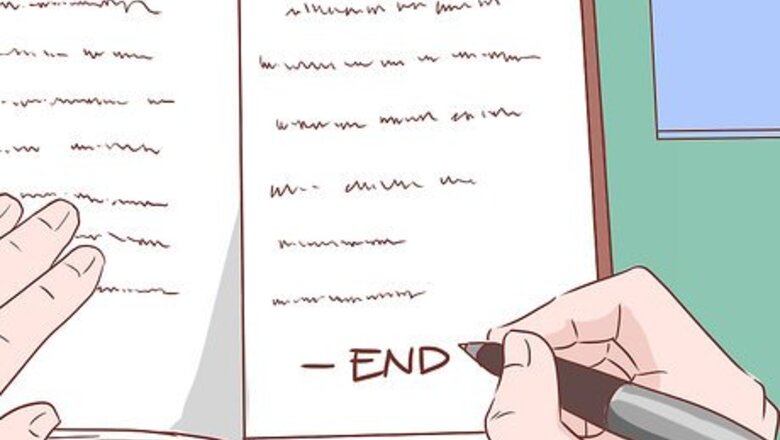
views
Brainstorming
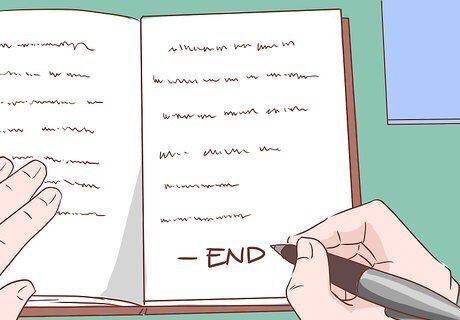
Finish writing the book first and do not concern yourself with the title. Some writers get stuck on the thought that an author must come up with the perfect title before starting. However, most authors do not find this a productive mindset. Most writers will come up with a "working title" which is basically a rough draft edition of the title--temporary and almost guaranteed to change. After you write the book, everything will become more clear. But be sure to write down any ideas that come to your head, even if they're ridiculous.

Recruit a friend or editor. Ask someone to join a brainstorming session. Brainstorming with another person is faster, more effective, and more fun than thinking about it yourself. Ask the other person to read your book. Meet in a quiet, relaxed location so you can both focus on your work. Put on unobtrusive music if it helps you think. Sometimes music, especially if relevant to your book, can give you inspiration. Don't be afraid to use a lyric or two as a potential title.

Decide the book's main purpose. Read your book and think about its identity. Think of titles related to the central message, or to the main emotion it inspires. Talk to your friend about what inspired you to write the book, and how you felt as you wrote it. These conversations will guide you to a title that fits the story and your personality. Different people may interpret your work in different ways; let each person involved in the brainstorming session list their ideas. Share the lists of ideas with each other. If you had to summarize your book in one phrase or word, what would it be? That can be good inspiration for a title.
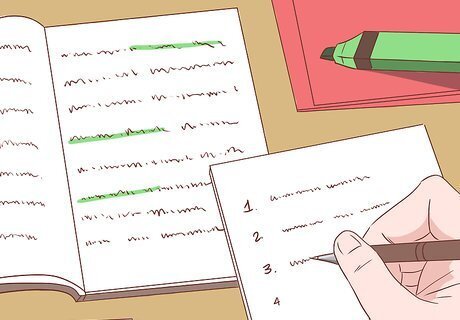
List favorite lines in the book. Write down favorite phrases from your work. These may or may not work as book titles, but they can give raw material to play with. Some books use titles from book quotations. Like The Beginning of Everything. This book's title is inspired by a quote from F. Scott Fitzgerald. Do you have a quote that relates to your book? This just might be the best title you come up with.

Consider naming the book after the main character. Many novels simply go with the name of the main character. Think of titles that mention the main character of the book, or a group of characters. This tends to be especially true of books driven by one main character. For example: Jude the Obscure Anne of Green Gables Harry Potter The Hobbit Percy Jackson

Use the setting to make a title. This can be a good choice if the setting is a key part of your work, or if it's an unusual setting that attracts attention. For example: Little House on the Prairie Through the Looking Glass The Jungle Book 50,000 Leagues Under the Sea Wuthering Heights

Consider poetic or mysterious names. Your title can address the book's themes or inspiration rather than the exact content. Mysterious titles intrigue readers who are looking for something poetic or unusual. For example: The Shadow of the Wind Midnight in the Garden of Good and Evil The Lion, the Witch, and the Wardrobe

Balance mystery and clarity. Just like book covers, book titles need to give enough information about the book's subject without giving away too much, in order to make the reader curious. The way the author works with these two elements - clarity and mystery - really depends on the type of book. For non-fiction, clarity is more important (especially for books that focus on a very specific topic). For fiction, mystery is more important.

Draw people in with a short, punchy title. This is a popular approach for nonfiction books. The title should give the reader an idea of the book's topic, but it doesn't need to be an exact description. For example: Thinking, Fast and Slow How Not to be Wrong Good to Great Made to Stick

Appeal to readers that have problems that can relate to the novel. Think of titles that relate to common life experiences, especially ones that promise solutions to the reader's problems. Books with these titles range from self-help books to literary novels. For example: How to Get Happy The Awkward Age The Dangerous Book for Girls If necessary, use a subtitle to expand and clarify any misconception. The title How to Be a Man may draw a different reader than How to Be a Man: A Memoir of the Rocky Mountains, versus How to Be a Man: The Autobiography of a Trans Person or How to be a Man: A Study of Gender, Adolescence, and Media in 1950s America.

Look at other book titles in similar genres. Browse book titles online or in bookstores and libraries. Do not copy an existing title, but good titles spark ideas for other good titles. Identify what appeals to you about the title, and brainstorm ideas for your book with similar characteristics. Be original. Your book's title has to compete with many other similar novels, so have a title that will stand out from the crowd. Titles are not protected by copyright, at least in the United States, but unique phrases may be trademarked. You are probably safe if you go with a well-known phrase, but you still risk confusion at the bookstore.
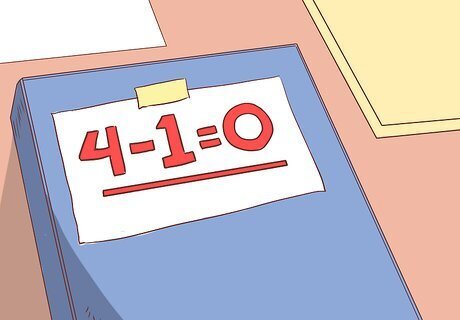
Consider come up with titles written in other codes. In some cases, a unique title can be used for For example, readers who are interested and generally proficient in mathematics may be drawn to a book with a mathematical expression. Example: 4-1=0 Try a foreign language. Books with a title in a non-English title can help give your title an international feel. Or, may tie into a character, place, idea, or event that may not be well described by the English language. Keep your audience in mind. If you are writing for people interested and knowledgeable in astrophysics, this will likely be a very different target group than that of a Christian romance novel. Avoid confusing titles. There is a fine line between "mysterious" and "confusing". If your title is hard to spell, it may be difficult for potential buyers to find your book online or in bookstores. Titles in non-English languages may be confusing. To some, it can be hard to remember, spell, or be viewed as overly scholarly. Some words, phrases, or the like may be relatively well understood by the public at large ("deja vu", "et cetera", "hasta la vista") but be careful of the usage of these. In general, it is better to translate a title if possible.

Aim for a large number of titles. Use all of the techniques above, until you have 25 possible titles or even 50! If the titles are not good, they can spark more ideas and discussions. You can combine more than one of the above techniques. For example, Harry Potter and the Chamber of Secrets mentions both a character and a setting, and foreshadows the climax of the novel.
Making Adjustments
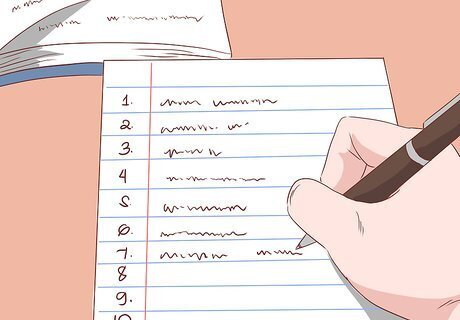
Narrow it down. Go through your list of ideas and pull out ten favorites. Follow the steps below to evaluate each title. Examine each title. If there is no clear winner, narrow it down to your favorite four or five and repeat the process.

Critique your title. Review the title with your editor, publisher, or a friend whose judgment and scrutiny you can trust. Would it attract the attention of people who would enjoy your work? Does it make sense? Is it memorable? Does it relate to the contents of your book?

Say your title out loud. How does it sound? Does it have good flow and rhythm, making it easy and pleasant to say? If the title sounds strange, or is difficult to say, clumsy or just somehow not right this is likely an indication that this is not a good title.
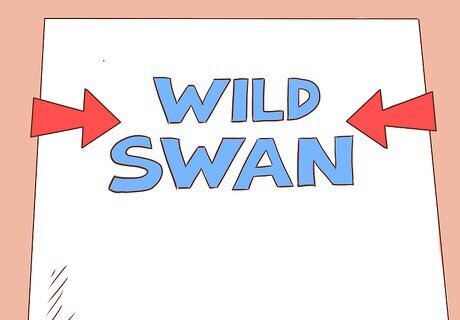
Stay concise. Keep your title as short as possible, no longer than a few words. Long titles are difficult to remember, and rarely reach out and grab a passing reader. If you think more detail, is necessary, attach a subtitle. For example, the cover of Wild Swans shows off the short, punchy title, and adds the informative subtitle Three Daughters of China in much smaller text.

If you are involved in cover art, try sketching a cover for your book. Authors may or may not have any involvement with cover art. But if you do, many find a little visualization helps. Sketch a simple book cover just to get an idea of the title's impression. Play with different arrangements of the title and your name. Does it pop out at you from the shelf? Is there a drawing that would work particularly well with the title? Be careful of being overly hung up on details at this point. If you have an illustrator to do this part, keep in mind he or she will be working with the graphic elements. Your title might look perfect with the right font, or a clever design. Depending on your publisher, you may or may not have input on the design of the cover anyway.












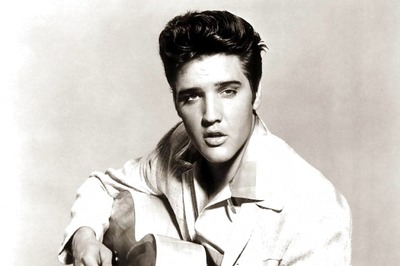


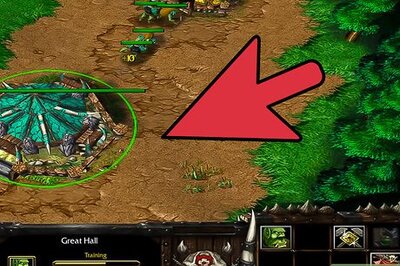




Comments
0 comment